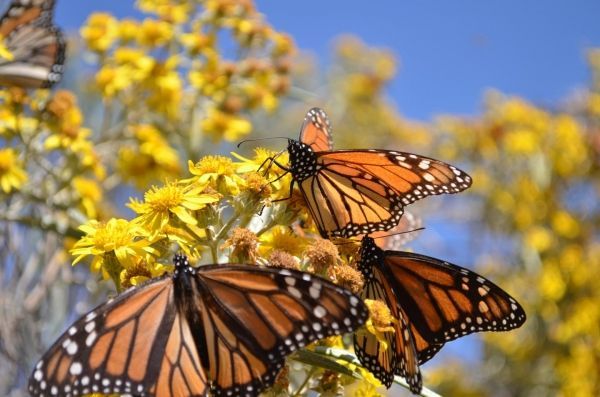You might think that mowing fields wouldn’t benefit monarch butterfly populations. New research from Michigan State University, however, shows that disturbances like mowing – at key times – might help boost the iconic butterfly’s numbers.
The results are published in the current issue of Biological Conservation, and they show that strategic grassland management benefits monarchs in two ways. First, monarchs lay more eggs on young milkweed – new growth after mowing – the sole food source for the butterflies in their larval stage. Second, fewer predators visit immature milkweed; more come during its mature stages, such as when it flowers.
“Monarch butterflies scout young milkweed to lay their eggs,” said Nate Haan, MSU postdoctoral research associate in entomology and the study’s lead author. “And in terms of a food source, milkweed is more like spinach when it’s young and comparable to cardboard as it ages.”
Monarchs have declined for decades and are close to being named as a threatened species. There are many reasons for their steep population decline. They face deforestation in and around their Mexican wintering grounds, increased exposure to pesticides and lost nectar resources along their migratory routes.
Read more at Michigan State University
Imae: You might think that mowing fields wouldn't benefit monarch butterfly populations. New research from Michigan State University, however, shows that disturbances like mowing -- at key times -- might help boost the iconic butterfly's numbers. (Credit: MSU)


